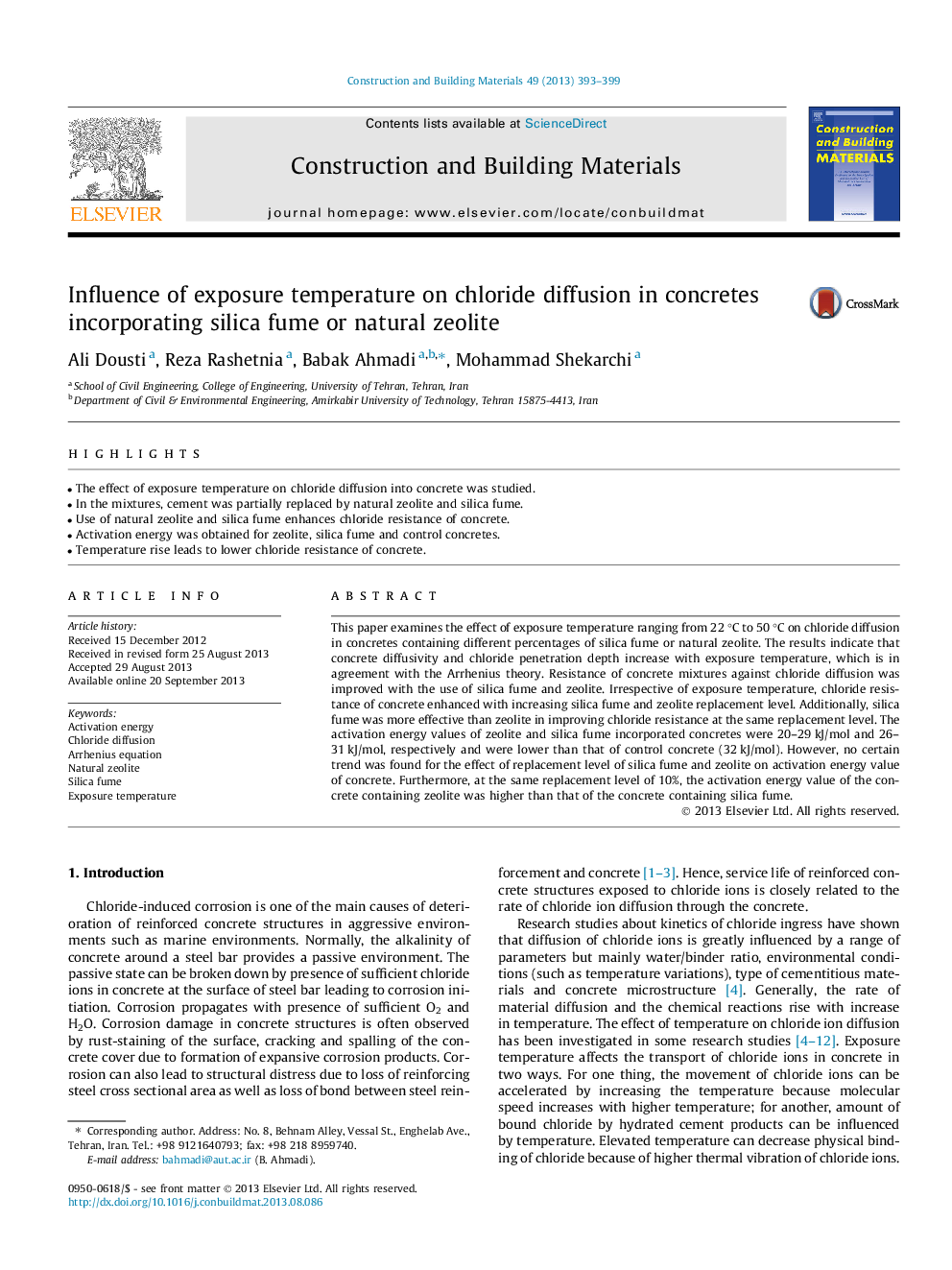| Article ID | Journal | Published Year | Pages | File Type |
|---|---|---|---|---|
| 6724832 | Construction and Building Materials | 2013 | 7 Pages |
Abstract
This paper examines the effect of exposure temperature ranging from 22 °C to 50 °C on chloride diffusion in concretes containing different percentages of silica fume or natural zeolite. The results indicate that concrete diffusivity and chloride penetration depth increase with exposure temperature, which is in agreement with the Arrhenius theory. Resistance of concrete mixtures against chloride diffusion was improved with the use of silica fume and zeolite. Irrespective of exposure temperature, chloride resistance of concrete enhanced with increasing silica fume and zeolite replacement level. Additionally, silica fume was more effective than zeolite in improving chloride resistance at the same replacement level. The activation energy values of zeolite and silica fume incorporated concretes were 20-29 kJ/mol and 26-31 kJ/mol, respectively and were lower than that of control concrete (32 kJ/mol). However, no certain trend was found for the effect of replacement level of silica fume and zeolite on activation energy value of concrete. Furthermore, at the same replacement level of 10%, the activation energy value of the concrete containing zeolite was higher than that of the concrete containing silica fume.
Keywords
Related Topics
Physical Sciences and Engineering
Engineering
Civil and Structural Engineering
Authors
Ali Dousti, Reza Rashetnia, Babak Ahmadi, Mohammad Shekarchi,
